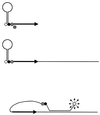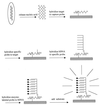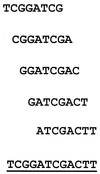Molecular detection of antimicrobial resistance
- PMID: 11585788
- PMCID: PMC89006
- DOI: 10.1128/CMR.14.4.836-871.2001
Molecular detection of antimicrobial resistance
Abstract
The determination of antimicrobial susceptibility of a clinical isolate, especially with increasing resistance, is often crucial for the optimal antimicrobial therapy of infected patients. Nucleic acid-based assays for the detection of resistance may offer advantages over phenotypic assays. Examples are the detection of the methicillin resistance-encoding mecA gene in staphylococci, rifampin resistance in Mycobacterium tuberculosis, and the spread of resistance determinants across the globe. However, molecular assays for the detection of resistance have a number of limitations. New resistance mechanisms may be missed, and in some cases the number of different genes makes generating an assay too costly to compete with phenotypic assays. In addition, proper quality control for molecular assays poses a problem for many laboratories, and this results in questionable results at best. The development of new molecular techniques, e.g., PCR using molecular beacons and DNA chips, expands the possibilities for monitoring resistance. Although molecular techniques for the detection of antimicrobial resistance clearly are winning a place in routine diagnostics, phenotypic assays are still the method of choice for most resistance determinations. In this review, we describe the applications of molecular techniques for the detection of antimicrobial resistance and the current state of the art.
Figures





References
-
- Afghani B, Stutman H R. Quantitative-competitive polymerase chain reaction for rapid susceptibility testing of Mycobacterium tuberculosis to isoniazid. Biochem Mol Med. 1997;60:182–186. - PubMed
Publication types
MeSH terms
LinkOut - more resources
Full Text Sources
Other Literature Sources
Medical

